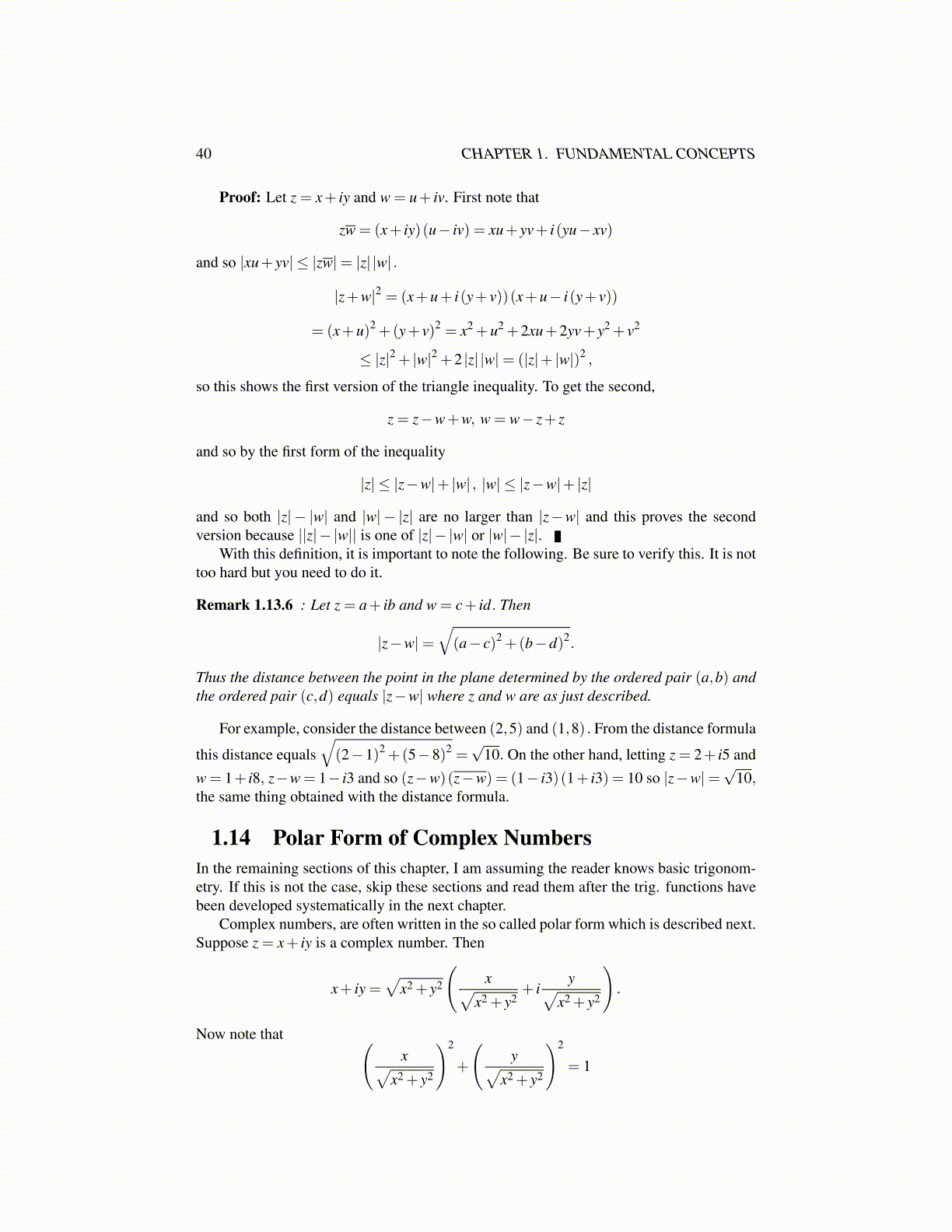
40 CHAPTER 1. FUNDAMENTAL CONCEPTS
Proof: Let z = x+ iy and w = u+ iv. First note that
zw = (x+ iy)(u− iv) = xu+ yv+ i(yu− xv)
and so |xu+ yv| ≤ |zw|= |z| |w| .
|z+w|2 = (x+u+ i(y+ v))(x+u− i(y+ v))
= (x+u)2 +(y+ v)2 = x2 +u2 +2xu+2yv+ y2 + v2
≤ |z|2 + |w|2 +2 |z| |w|= (|z|+ |w|)2 ,
so this shows the first version of the triangle inequality. To get the second,
z = z−w+w, w = w− z+ z
and so by the first form of the inequality
|z| ≤ |z−w|+ |w| , |w| ≤ |z−w|+ |z|
and so both |z| − |w| and |w| − |z| are no larger than |z−w| and this proves the secondversion because ||z|− |w|| is one of |z|− |w| or |w|− |z|.
With this definition, it is important to note the following. Be sure to verify this. It is nottoo hard but you need to do it.
Remark 1.13.6 : Let z = a+ ib and w = c+ id. Then
|z−w|=√
(a− c)2 +(b−d)2.
Thus the distance between the point in the plane determined by the ordered pair (a,b) andthe ordered pair (c,d) equals |z−w| where z and w are as just described.
For example, consider the distance between (2,5) and (1,8) . From the distance formula
this distance equals√(2−1)2 +(5−8)2 =
√10. On the other hand, letting z = 2+ i5 and
w = 1+ i8, z−w = 1− i3 and so (z−w)(z−w) = (1− i3)(1+ i3) = 10 so |z−w|=√
10,the same thing obtained with the distance formula.
1.14 Polar Form of Complex NumbersIn the remaining sections of this chapter, I am assuming the reader knows basic trigonom-etry. If this is not the case, skip these sections and read them after the trig. functions havebeen developed systematically in the next chapter.
Complex numbers, are often written in the so called polar form which is described next.Suppose z = x+ iy is a complex number. Then
x+ iy =√
x2 + y2
(x√
x2 + y2+ i
y√x2 + y2
).
Now note that (x√
x2 + y2
)2
+
(y√
x2 + y2
)2
= 1